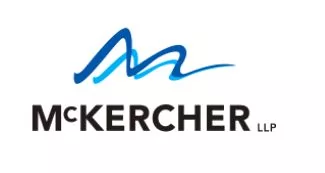Simple Agreements for Future Equity (SAFEs) have recently emerged in Saskatchewan, particularly among early stage companies, which in our province inevitably include our ever-growing Ag-Tech and Bio-Tech sectors. While SAFEs are dubbed as quick, simple and standard forms of investment, this only holds true for those (few) investors routinely investing in companies with SAFEs. For most Saskatchewan companies, however, SAFEs are novel and only now being considered. In this article, we briefly explain SAFEs and offer our insights into how companies and investors can safely raise capital with SAFEs.
In basic terms, SAFEs are agreements whereby investors make cash investments in a company in return for shares issued later in connection with a specific event (usually a share capital raise.) To this end, the basic features of the SAFE are:
- conversion shares (that is, the shares that are issuable upon the trigger event); and
- conversion price (that is, the price at which the conversion shares are issued).
Conversion prices may be presented as valuation cap conversions, discount rate conversions, both or neither. In this respect, SAFEs are like convertible debt, but importantly, are not debt and are specifically intended as an alternative to debt. In addition to these mechanics, SAFEs may include other features such as: liquidity event conversion, dissolution event conversion, priority rights, pro rata rights, information rights, director or board observer rights, most-favored nation rights and so on. On top of this, investors and companies need to comply with Canadian corporate and securities laws when entering into SAFEs which at law are a "security" and subject to government regulation.
Simple, right? Perhaps not.
SAFEs were popularized in 2013 by the premier startup accelerator, Y Combinator, based in the Silicon Valley. The main reason for their creation was to streamline investment in early-stage, high-growth companies when it was difficult or impossible to value such companies. Additionally, companies could obtain capital through negotiating one agreement without protracted negotiations, numerous other agreements or amendments to company articles of incorporation, all with a goal of reducing transaction costs.
Since inception, the U.S. SAFE has evolved in several respects most notably by using a post-money valuation cap (as opposed to pre-money valuation cap). Again, this is common jargon to those dubbing SAFEs as quick, simple and standard. For the rest of us, this simply refers to the timing of the calculation – before or after the triggering share capital raise. The main reason for this evolution is to allow founders to know with certainty "how much of the company they are selling".
In Canada, the National Angel Capital Organization and its partner organizations have "Canadianized" the SAFE. This was a welcomed initiative as it removed many features unique to the U.S. marketplace – most notably the use of preferred shares in early series financing.
So, with that primer, here are our top 3 SAFE take ways:
- Nothing is standard; Everything is negotiable.
It is suggested that with the SAFE, company founders and investors only need to negotiate the valuation cap. This simply is not true. Like any agreement, everything is open to negotiation. As we alluded to above, SAFEs may include several features beyond the valuation cap, all of which should be carefully negotiated to protect companies and investors alike. Most of these added features are investor protections, and all investors should be fully informed as to which of those protections they require in exchange for their cash investment. For company founders, however, these same protections may encroach on your ability to effectively and nimbly manage and grow your company.
- Canada is not the United States.
Obviously, but the point here is that the U.S form is specific to the U.S. and the Canadian form is specific to Canada, not only in its application of the law, but also in its reflection of the Canadian capital markets. All agreements incur unneeded risk when unintentionally contracting under the laws and practices of a foreign jurisdiction. More specifically, in Saskatchewan it is still rare to conclude early series capital raises by way of preferred shares, which is the foundation of the U.S. SAFE. For Saskatchewan companies and investors, it is important to ensure that the starting point for the SAFE is built upon Canadian laws and practice and to not skew negotiations with U.S. marketplace concepts.
- Obtain Professional Advice.
Now for the shameless plug. With the company founders often focused on the operational challenges of running and growing the business, the legal requirements are not always adequately valued or, if valued, prioritized. As for investors, the allure of the investment lies in its potential, and again legal issues are not at the forefront. While SAFEs do in fact reduce transaction costs, they are not a replacement for professional advice be it legal, financial, accounting or tax. As simple as SAFEs may present, they are fraught with issues when either or both of the company and the investor are not fully informed.
Christopher J. Masich is a Partner at McKercher LLP where he maintains a commercial transactions practice focused in the areas of banking, securities, finance and investment, focusing on key Saskatchewan economic sectors – energy, natural resources and agriculture.
Originally published by Industry West
The content of this article is intended to provide a general guide to the subject matter. Specialist advice should be sought about your specific circumstances.

